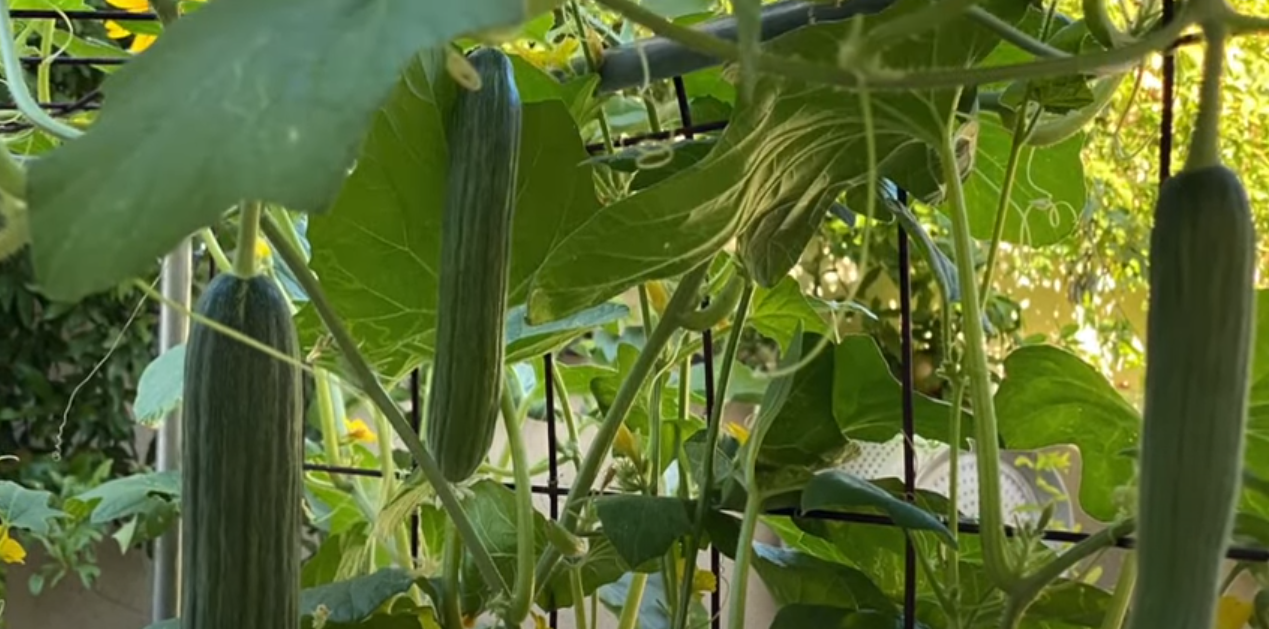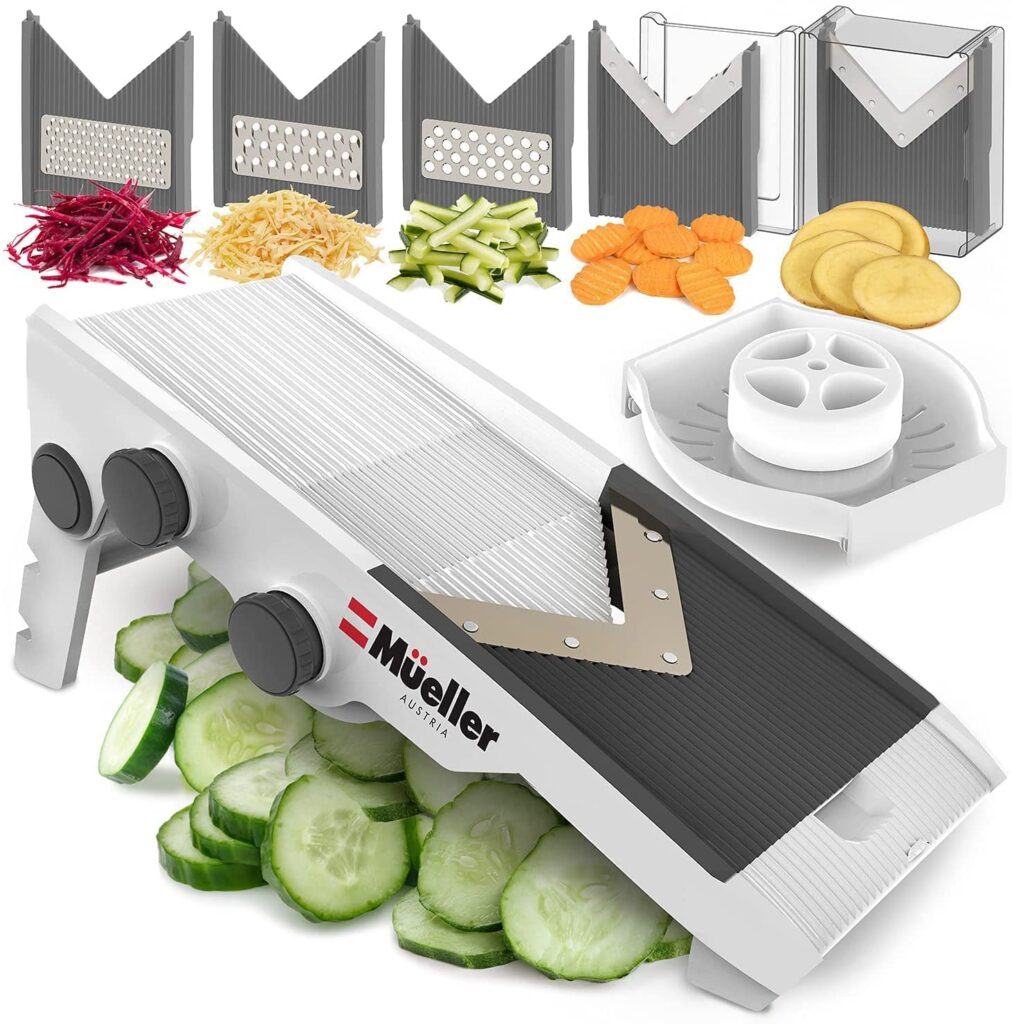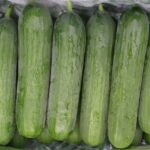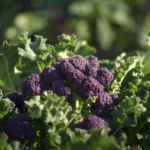Armenian cucumber is a cucumber-like heirloom vegetable which is closely related to the watermelon. It is slender and elongated in shape, tastes and looks like a regular cucumber when harvested at a certain size. Armenian cucumber is also known by several other names which include snake cucumber, snake melon and yard-long cucumber. Furthermore, it also has local names such as uri in Japan, chanbar in Persian, tirozî in Kurdish, feggous in Morocco, and tortarello in Italian. If left to grow on the ground, the Armenian cucumber plant produces typically bent and twisted fruit from whence the name snake comes from.
Table of Contents
Introduction
Armenian cucumber’s designated botanical name is Cucumis melo var. flexuosus. It is reported to have been first cultivated in Armenian in the 15th century. Furthermore, Armenian cucumber is of the same genus – Cucumis – as the regular cucumber, itself botanically known as Cucumis sativus. Both vegetables share in the Cucurbitaceae or gourd family.
Unbeknown to many, Armenian cucumber is closer in relationship to the watermelon than the cucumber. This becomes apparent when the snake cucumber is left on the vine to continue growing. The flavor begins to resemble that of a watermelon, so does the skin and seeds in size.
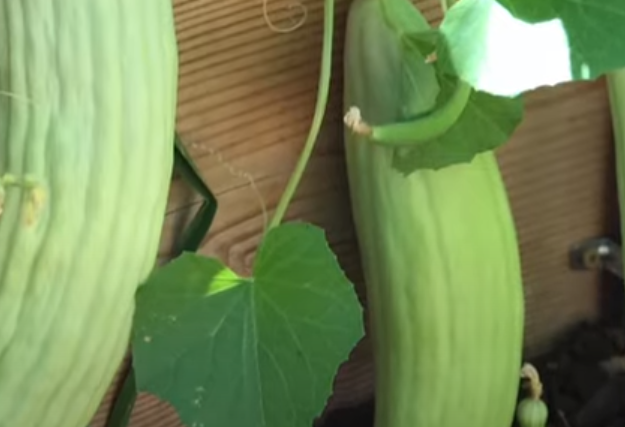
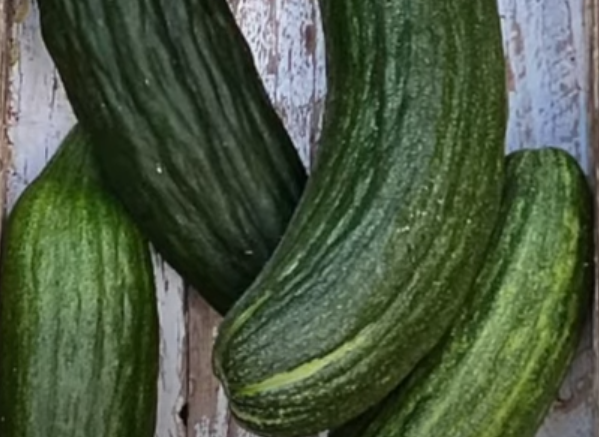
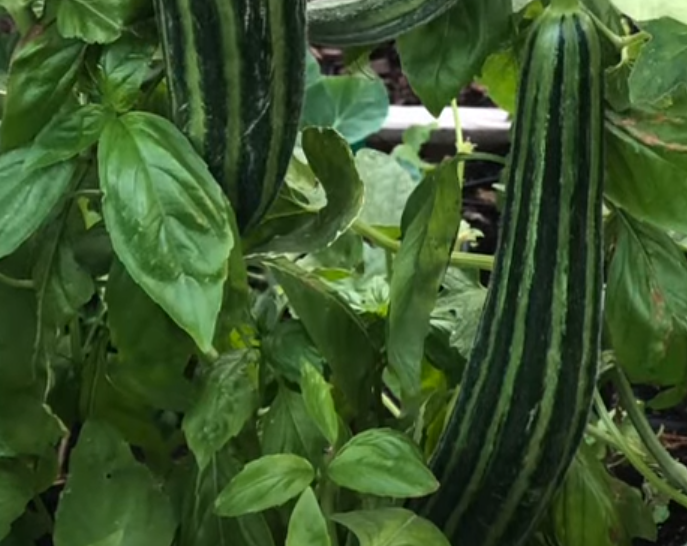
There are different varieties of the Armenian cucumber as shown here. These include striped varieties which have longitudinal light-colored striped lines running the entire length of the fruit. There are also some lime green or pale green looking varieties which appear to be more common with many home growers. This variety resembles certain lemon cucumbers in pigmentation. Finally, there is the darker green snake melon variety which has a dark green skin which looks similar to the English or Persian cucumber.
Armenian Cucumber Characteristics
One of the most distinguishing characteristics of the Armenia cucumber is its almost always bent and twisted shape which becomes thicker at the blossom end. This is the source of its other name – snake melon. Growers tend to remedy this twisting by supporting the vines on trellises. This has proved to encourage straighter and more even growth of the fruit.
Similar to burpless cucumbers, Armenian cucumbers carry no bitterness, have digestible skin (when harvested early) which enables the vegetable to be utilized off the vine without need for peeling off the skin. In addition, snake melons can grow as long as 36 inches or 91 cm long. However, the fruit is best for culinary application when harvested at between 12 and 18 inches or 30 to 38 cm long. The flavor is at its peak at this very stage.
One more interesting aspect about Armenian cucumbers is that they are extremely fast growing. Once fruit appears they should be watched closely for harvest as they tend to change in size in a matter of hours (see harvest section). Some growers have reported growth as fast as 8 inches overnight!
Armenian Cucumber Benefits
Yard-long cucumber offers some interesting benefits when consumed. One obvious benefit is hydration due to the high water content. This cucumber can be a handy source of water in hot weather. According to one source, snack melon is rich in vitamins, minerals, and other micronutrients. It is also a reliable source of whole fiber.
According to Mayo Clinic, not only does fiber help relieve constipation, it is also useful in weight loss, and the lowering of risk around diabetes, heart disease and certain types of cancers. There are clearly some meaningful health benefits associated with the consumption of Armenian cucumbers.
Armenian Cucumber Seeds
Seeds for the snake cucumber are widely accessible in North America. The seeds are usually sold in packets containing as many as 50 seeds each. Apart from commercially available seeds, you can also easily save seed from existing crop. This will avail thousands of seeds, you would never need to buy seed again. Nonetheless, the following are some seed outlets from where to order Armenian cucumber seeds.
- Amazon
- Seed Savers Exchange (SSE)
- OSC Seeds
- Baker Creek Heirloom Seeds
- Botanical Interests
- Metchosin Farm
- Eden Brothers
- Gurney’s Seed & Nursery Co.
- Adaptive Seeds
- Burpee
- Eden Seeds (Australia)
Armenian Cucumber Recipes
The primary application of the Armenian snake cucumber is culinary in a variety of recipe preparations. The sweet flavored fruit, edible skin and seeds makes the vegetable versatile. Snake melon is mostly consumed raw just like regular cucumber. Apart from snacking on the melon fresh from the vine, Armenian cucumbers are also used in salads and pickles, in grilled vegetable kebabs, smoothies and juices. The melon can also be fermented.
The following are some recipes to try out that utilize Armenian cucumbers.
| Pickled Armenian Cucumber Recipe – this recipe pickles Armenian cucumbers in just 15 minutes with an additional 3 hours for refrigerator chilling needed before serving. The recipe requires two 8 inch long melons that are used without need for peeling. At 8 inches, this is just the right size for the best flavor. Other ingredients will be white vinegar, granulated sugar and dill weed. For an inviting presentation, the Armenian cucumbers are sliced using mandoline (see below). View Recipe. |
| Snake Melon Salad Recipe – this is a 10 minute recipe producing a side dish or light lunch depending on what you fancy. The recipe calls for a single melon which can also be substituted with an English or Kirby cucumber. The Armenian cucumber used in this recipe is first roughly chopped before it is combined with the other ingredients. Other ingredients to make it into this salad will be cheese, olive oil, red wine vinegar, red onion, salt and pepper. As might already have been seen, this is a very simple recipe yet scrumptious. View Recipe. |
| Moroccan Shlada Feggous Salad – if you have 23 minutes to spare, you can make this exotic Moroccan salad involving Armenian cucumber. The recipe will produce a delicious tasting salad that serves 6. Once all the ingredients are combined, the vegetables are allowed to sit for about 1 hour at room temperature to allow them to marinate before serving. The ingredients that go into this recipe are super simple and easily accessible. You will need your cucumbers, ripe tomatoes, fresh mint herb, onion, lemon juice and olive oil apart from the salt and pepper. View Recipe. |
| Armenian Cucumber Salad Recipe – this is a Turkish recipe for making a salad using snake melon. There are obviously many salad variations that make use of Armenian cucumber or Acur in Turkish. This particular salad is uniquely interesting because it produces a salad of a uniform color. This is to say, what you get is not a colorful salad unlike others. Furthermore, the salad is softened in a sweet and sour dressing which involves honey. In the end what you have is a scrumptious quick fix salad or side dish. View Recipe. |
| Armenian Cucumber Kebab Recipe – finally, this recipe originally calls for regular cucumber in the assembly of the kebabs. However, the regular cucumbers may be substituted with Armenian cucumbers with ease. In addition, sweet peppers may also be added to the list of ingredients going into the kebab. Other ingredients will be apples, cherry tomatoes and mushrooms. View Recipe. |
Slicing Armenian Cucumbers to Perfection
If you work with a variety of fruits and vegetables such as cucumber, tomatoes, onions, carrots, apples and oranges, a mandoline is a highly recommended and worthwhile investment. This piece of kitchen equipment produces beautifully sliced ingredients for use in salads and a variety of other recipe preparations. Oftentimes what separates a finely executed recipe from a poorly done one is not even how the final product tastes, but how it is presented. We recommend using a mandoline for slicing your Armenian cucumbers to perfection in various recipes. See on Amazon.
Growing Armenian Cucumber
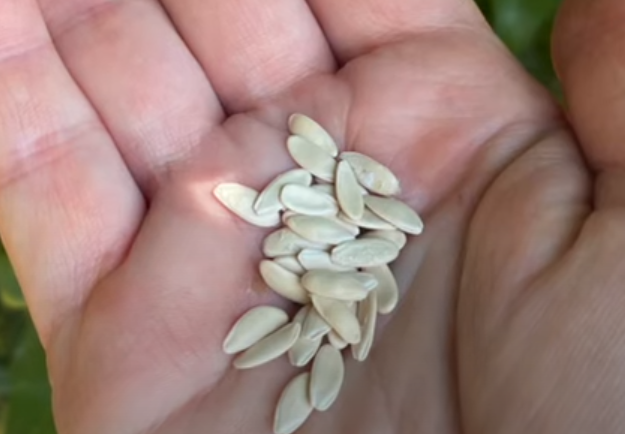
Snake cucumber is fairly easy to grow from seed once the essentials have been satisfied. One of the main things to remember is that Armenian cucumbers are warm weather crops. Care must be taken to avoid planting too early in spring.
For best results, aim to plant the melon from seed when the days are consistently warm. Temperatures should be at least 65°F or 18°C although temperatures above 85°F or 29°C are even better.
Armenian cucumbers seem to perform best when directly seeded into the garden soil. Two to three seeds are planted in a single hole which is half an inch to an inch deep with a spacing of 1 foot apart between the holes. Following germination the plants are thinned out to remain with a single cucumber plant per every foot.
Armenian Cucumber Plant
Armenian cucumbers are heavily vining plants. The plants must be afforded plenty of room between them. This also reduces the risk of diseases such as powdery mildew. Furthermore, to encourage better looking fruit which is not bent or twisted, trellising should be part of the plan when growing Armenian cucumber. The plant does well when provided with something to climb although it can perform just as well vining on the ground save for the crooked fruit.
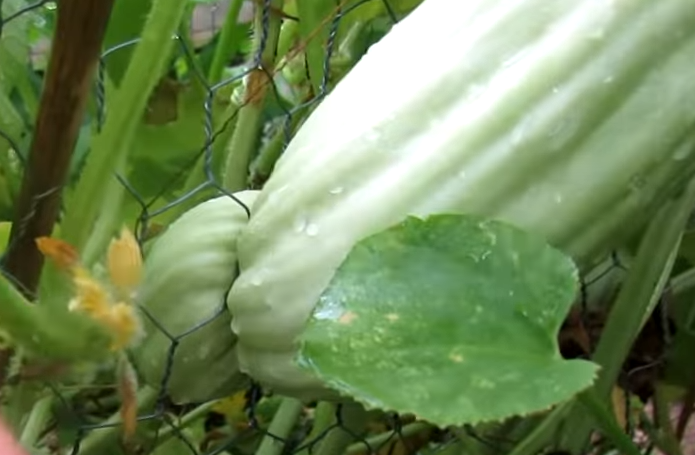
Trellising must also be chosen carefully. Certain trellising methods such as chicken fences may cause damage to fruit as shown in the image. If using a fence, wider fences with bigger holes may be ideal to avoid trapping or constraining the fruit.
Snake cucumber plants produce both male and female blossoms. At first, male blossoms appear even in en masse before the appearance of the female flowers. If the grower finds the female blossoms withering with no fruit, this is an indication that there is no pollination taking place. A quick fix is usually hand pollination, which is essentially doing the bee’s work. This article by the University of Göttingen explains more about hand pollination and why it may be necessary.
Harvesting Armenian Cucumbers
Timing is everything when it comes to harvesting snake cucumbers. As already mentioned, flavor is at its peak when the cucumbers are between 12 and 18 inches long. At this size, the seeds are smaller and the flavor of the melon is less like that of a watermelon and more like a regular cucumber.
Considering that Armenian cucumbers tend to grow very fast in a matter of hours, the grower is to be necessarily preoccupied with the right time for harvest. The recommended way to harvest the fruit is to snap the fruit at the stem rather than pulling fruit from the vine which may damage the vine.
Regular harvesting of Armenian cucumber is recommended as this encourages increased production. This is common with many vining plants and even some herbs. The more you harvest, the more the plant produces.
Conclusion
Armenian cucumber is a cucumber look-alike which has been around for many decades. The vegetable has similar culinary applications to that of the regular English or Persian cucumber that many people are used to. Common uses of the cucumber include salads, pickles, smoothies and juices. Armenian cucumbers are found in different regions of the world where they tend to be known by their local names which may be not be obvious to English speakers. In the United States, seed for the snake cucumber, as it is also known, is easily accessible from most seed companies. The Armenian cucumber is very easy to grow once the basic growing conditions are satisfied.
Random But Good Reads:
